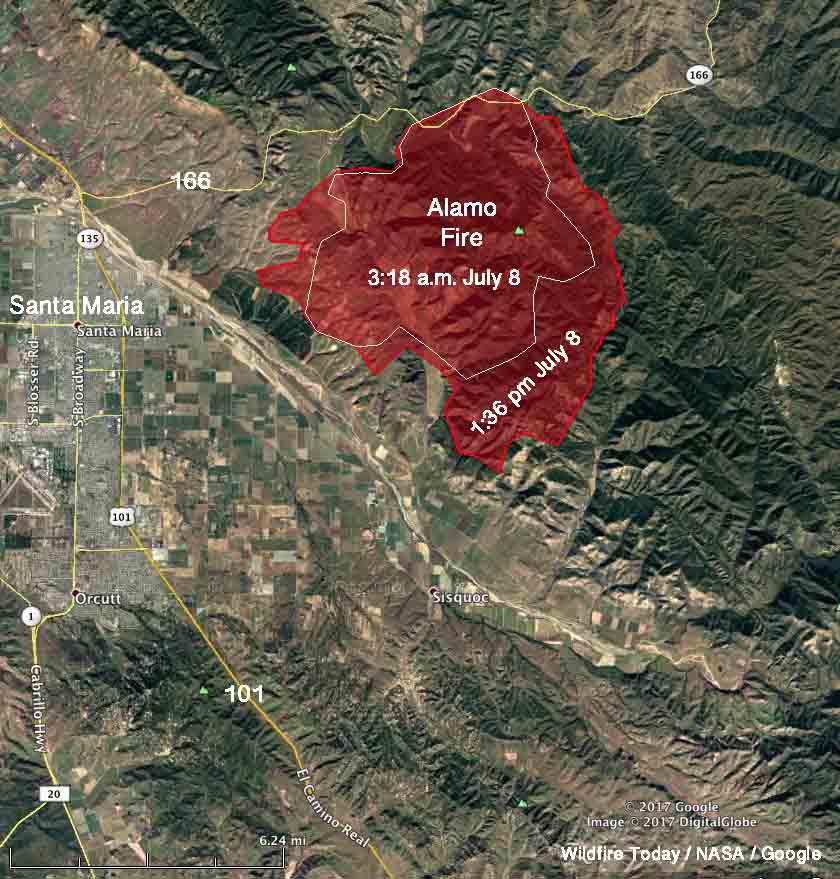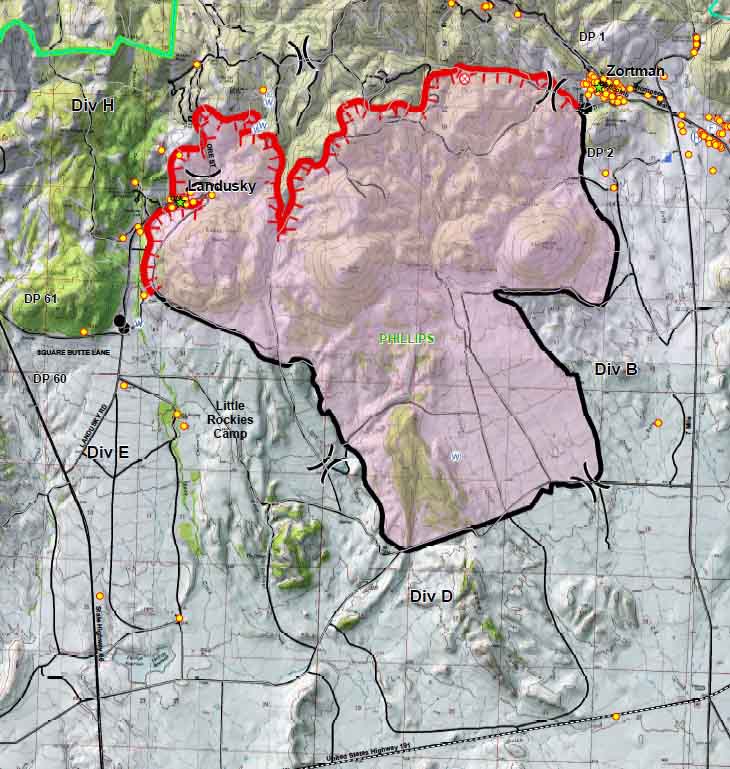Above: 3-D map of the Alamo Fire looking west, mapped Friday night.
(Updated at 6:18 p.m. PDT July 8, 2017)
We have an updated map of the Alamo Fire that has now grown to within four miles of Santa Maria, California and US Highway 101.

Our very, very unofficial estimates using heat data collected by sensors on a satellite, show that it has burned APPROXIMATELY 23,000 acres as of 1:38 p.m. PDT July 8, 2017.
KSBY reports that evacuation orders have been issued for Blazing Saddle Drive, Buckhorn Ridge, White Rock Lane, Colson Canyon Road, Pine Canyon, and Tepusquet Road south of Blazing Saddle Drive to Santa Maria Mesa Road.
#AlamoFire this morning around 0530 pic.twitter.com/91IJSvIXCA
— Atascadero Fire (@ATAFireL3600) July 8, 2017
****
(Updated at 3:50 p.m. PDT July 8, 2017)
The California Department of Forestry and Fire Protection reported Saturday at 3:05 p.m. that the Alamo Fire had grown to 19,000 acres.
The perimeter of the fire shown in the map below was derived from data collected by heat sensors on a satellite at 3:18 a.m. July 8. At that time the fire was about 13,000 acres, but since then the fire has been very active and produced a pyrocumulus cloud over the fire which is a sign of very intense burning.

****
(Originally published at 11:33 a.m. PDT July 8, 2017)
During the first 24 hours after the Alamo Fire started at 3:43 p.m. PDT Thursday July 6 east of Santa Maria, California it spread over several hundred acres. But winds Friday afternoon caused it to grow substantially and by late Friday night it was mapped at about 5,900 acres. It continued to grow over the next 12 hours and could be quite a bit larger as this is written just after noon on Saturday.
Mandatory evacuations are in effect for some areas near Tepusquet Canyon.
The fire is 7 miles east of Santa Maria and US Highway 101.
The wind is expected to shift Saturday afternoon to come out of the northwest.

Air tankers are reloading at the tanker base at the Santa Maria Airport. Live cams with views of the ramp are available here and here.





